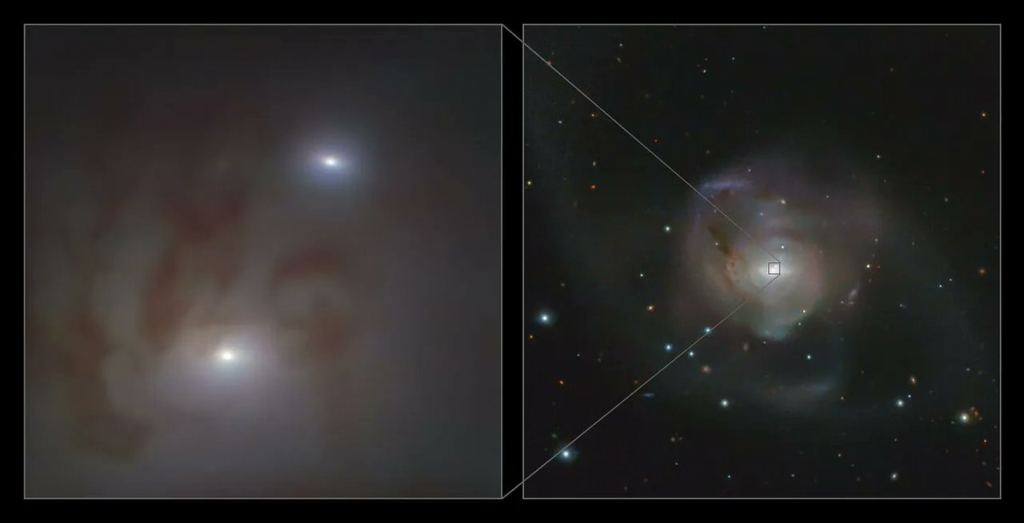Galaxy Found With Twin Supermassive Black Holes

For literally being black in the truest sense of the word, black holes are surprisingly easy to spot. Astronomers have spent decades at this point purposely searching for them and have found thousands already, with potentially 100 billion existing in our part of the universe. We are still finding new types and configurations of black holes consistently. Now, new research led by Dr. Karina Voggel of the Strasbourg Observatory found a pair of black holes that hold the new records of being both the closest supermassive black hole pair to Earth and the closest together pair ever seen. That research was carried out with the Very Large Telescope in Chile, which specializes in radio astronomy. It took a look at galaxy NGC 7727 in the constellation Aquarius. Astronomers previously knew there was a supermassive black hole at the galaxy’s center, but the other, much smaller one, is newly discovered. The more massive of the two weighs in at a whopping 154 million times the Sun’s mass, while the newly discovered black hole weighs in at a mere 6.3 million times the mass of the Sun. Video on the process of finding supermassive black holes.Credit – ESO YouTube Channel The size disparity isn’t all that unique, but the overall and relative locations of the black holes are. They are just 1600 light-years apart – a small separation given the vastness of space. That proximity is less than half the distance between the previous record holder for the closest supermassive black holes. In addition, the galaxy where they are located is the closest ever to have two observed supermassive black holes. While it is still 89 million light-years from Earth, it is almost an order of magnitude closer than the previous record-holder, which was 470 million light-years away. Even so, 89 million light-years is still pretty far away, leaving open the possibility of finding an ever closer black hole pair. UT video describing a supermassive black hole pair. To do so, astronomers will turn to the upcoming Extremely Large Telescope (ELT), which is slated to start operations later this decade. The HARMONI instrument planned for the ELT is more powerful than the MUSE instrument on VLT used for the current research. That also means it will be able to see farther than the VLT and collect more detailed data on dual black hole systems that are closer. All that capability will be on board well before anything spectacular happens in NGC 7727. Scientists estimate that the two black holes won’t merge for another 250 million years or so despite their proximity. In the meantime, researchers can turn their instruments to search for plenty of other exciting interactions, no matter how black they might be. Learn More:ESO – ESO telescope uncovers closest pair of supermassive black holes yetAstronomy & Astrophysics – First direct dynamical detection of a dual super-massive black hole system at sub-kpc separationUT – Astronomers Have Found a Place With Three Supermassive Black Holes Orbiting Around Each OtherNewsweek – Closest Supermassive Black Hole Pair to Earth Discovered, On Verge of Collision Lead Image: The post Galaxy Found With Twin Supermassive Black Holes appeared first on Universe Today.
Read original article here.
Written by: Andy Tomaswick

Facebook Comments